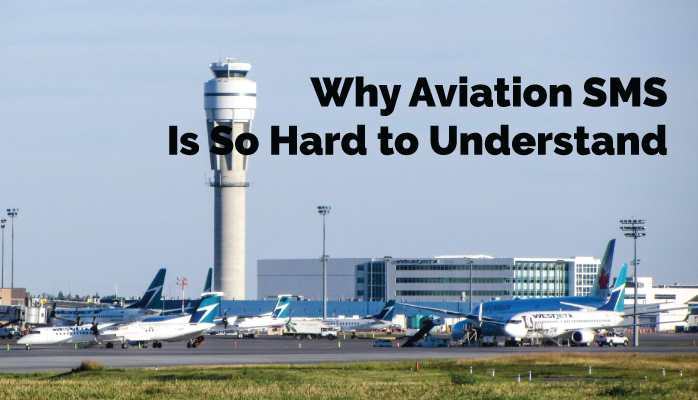
Aviation Safety Management Systems (SMS) are critical for ensuring safety in the aviation industry, but they often feel like an enigma to even the most experienced safety managers.
The complexity of SMS stems from its multifaceted nature, combining regulatory requirements, operational intricacies, and cultural shifts.
This article explores why aviation SMS is so hard to understand and offers practical insights for safety managers to navigate its challenges effectively.
The Complexity of Regulatory Frameworks
Aviation SMS is governed by a web of international and national regulations, primarily driven by the International Civil Aviation Organization (ICAO) and local authorities like the Federal Aviation Administration (FAA) or the European Union Aviation Safety Agency (EASA). These regulations, while essential, are dense and constantly evolving.
-
ICAO Annex 19: This annex outlines the global standards for SMS, requiring organizations to integrate safety management into their operations. However, its broad principles can be difficult to translate into actionable steps.
-
Local Variations: Different countries interpret ICAO standards uniquely, leading to variations in compliance requirements. For example, the FAA’s Part 5 mandates specific SMS components for U.S. operators, which may differ from EASA’s requirements.
-
Frequent Updates: Regulatory bodies regularly update guidelines, making it challenging for safety managers to stay current. For instance, recent shifts toward performance-based oversight demand more data-driven approaches, adding another layer of complexity.
Keeping up with these frameworks requires constant vigilance, legal expertise, and resources that many organizations struggle to allocate.
Related Aviation SMS Safety Performance Articles
- How to Conduct Safety Performance Assessments in Aviation SMS
- What Are Performance Based Aviation Safety Management Systems?
- Is Your Aviation SMS Implementation Performing or Prescriptive?
The Multidisciplinary Nature of SMS
Aviation SMS isn’t just about safety—it’s a holistic system integrating risk management, human factors, data analysis, and organizational culture. This multidisciplinary approach makes it hard to grasp for safety managers who may specialize in only one area.
-
Risk Management: SMS requires identifying hazards, assessing risks, and implementing controls. This process involves technical knowledge of aviation operations, from aircraft maintenance to air traffic control.
-
Human Factors: Understanding human error and its role in accidents is central to SMS. Concepts like fatigue management or crew resource management demand expertise in psychology and training.
-
Data Analysis: Modern SMS relies heavily on data to predict and prevent incidents. Safety managers must interpret safety reports, incident data, and trend analyses, often requiring familiarity with statistical tools.
-
Cultural Integration: A successful SMS depends on a safety culture where employees at all levels report hazards without fear. Building this culture requires leadership skills and change management, areas where technical safety managers may lack training.
This broad scope means safety managers must wear multiple hats, which can feel overwhelming without proper support or training.
The Jargon Barrier
SMS comes with a lexicon that can intimidate newcomers. Terms like “Safety Risk Management (SRM),” “Safety Assurance (SA),” “Safety Performance Indicators (SPIs),” and “Just Culture” are thrown around freely, but their meanings aren’t always intuitive.
-
Acronym Overload: The aviation industry loves acronyms, and SMS is no exception. For example, SRM involves a structured process for identifying and mitigating risks, but the term alone doesn’t convey that complexity.
-
Ambiguous Concepts: Terms like “Just Culture” sound straightforward but involve nuanced principles. A Just Culture encourages reporting without blame, yet balancing accountability and openness is tricky in practice.
-
Lack of Standardization: Different organizations use terms inconsistently. What one airline calls a “Safety Performance Indicator,” another might call a “Key Performance Indicator,” leading to confusion during collaboration or audits. For example, SMS Pro prefers KPI over SPI due to SMS Pro's integrated safety and quality management principles.
This jargon creates a steep learning curve, alienating safety managers who are already stretched thin.
Implementation Challenges
Even when the theory of SMS is understood, putting it into practice is a hurdle. Implementation requires aligning processes, people, and technology across an organization, which is easier said than done.
-
Resource Constraints: Small operators often lack the budget or staff to fully implement SMS. Even larger airlines struggle to allocate resources for training, software, or dedicated safety personnel.
-
Resistance to Change: Employees and management may resist SMS if they perceive it as bureaucratic or punitive. Convincing a workforce to embrace proactive reporting takes time and trust.
-
Technology Gaps: Effective SMS relies on software for data collection and analysis, but many organizations use outdated systems or none at all. Integrating modern SMS software with legacy systems is a technical and financial challenge.
-
Scalability Issues: What works for a small regional airline may not suit a global carrier. Scaling SMS to fit an organization’s size and complexity requires customization, which adds to the difficulty.
These practical barriers make SMS feel like a moving target, frustrating safety managers who want to do the right thing.
Related Aviation SMS Implementation Articles
- SMS First Steps - How to Create an SMS Implementation Plan
- Why Should We Implement Aviation SMS?
- Overview of 4 Phases of Aviation SMS Implementation With Free Resources
The Evolving Role of Aviation Safety Managers
The role of the safety manager has evolved with SMS, adding to the challenge of understanding it. Traditionally, safety managers focused on compliance and incident investigation. Now, they’re expected to be strategists, data analysts, and cultural leaders.
-
From Reactive to Proactive: SMS shifts the focus from reacting to incidents to preventing them. This requires safety managers to anticipate risks, which demands a mindset shift and new skills.
-
Data-Driven Decision Making: Safety managers must now use data to justify safety investments to executives. This involves presenting complex analyses in a way that resonates with non-technical stakeholders.
-
Leadership and Advocacy: Building a safety culture means influencing people at all levels, from pilots to ground crew to C-suite executives. This requires communication and persuasion skills that aren’t always taught in technical training.
This expanded role can leave safety managers feeling underprepared, especially if their organization doesn’t provide adequate training or support.
How Safety Managers Can Overcome These Challenges
While aviation SMS is undeniably complex, safety managers can take steps to make it more manageable:
-
Invest in Training: Attend aviation SMS-specific courses offered by organizations like the International Air Transport Association (IATA) or local aviation authorities. These programs break down regulations, jargon, and best practices.
-
Leverage Technology: Adopt user-friendly SMS software to streamline data collection, reporting, and analysis. Tools like SMS Pro can simplify compliance and risk management.
-
Build a Safety Culture: Start small by encouraging open reporting in one department, then scale up. Recognize employees who report hazards to reinforce a Just Culture.
-
Network with Peers: Join industry forums or associations like the Aviation Safety InfoShare to learn from other safety managers’ experiences.
-
Simplify Communication: Translate SMS jargon into plain language when training staff or presenting to executives. Clear communication reduces resistance and fosters buy-in.
Conclusion
Aviation SMS is hard to understand because it combines
- complex regulations,
- multidisciplinary knowledge,
- dense jargon, and
- practical implementation challenges.
For safety managers, the evolving demands of the role only add to the difficulty. However, by investing in training, leveraging technology, and fostering a safety culture, safety managers can demystify SMS and make it a powerful tool for enhancing aviation safety.
The key is persistence. an aviation SMS implementation isn’t a one-and-done project—it’s a continuous journey of learning and improvement. By breaking it down into manageable steps, safety managers can not only understand SMS but also champion it within their organizations, ultimately making the skies safer for everyone.
Modern aviation-specific software tools reduce the burden and pave the road toward success. Do you need some help or have questions?







